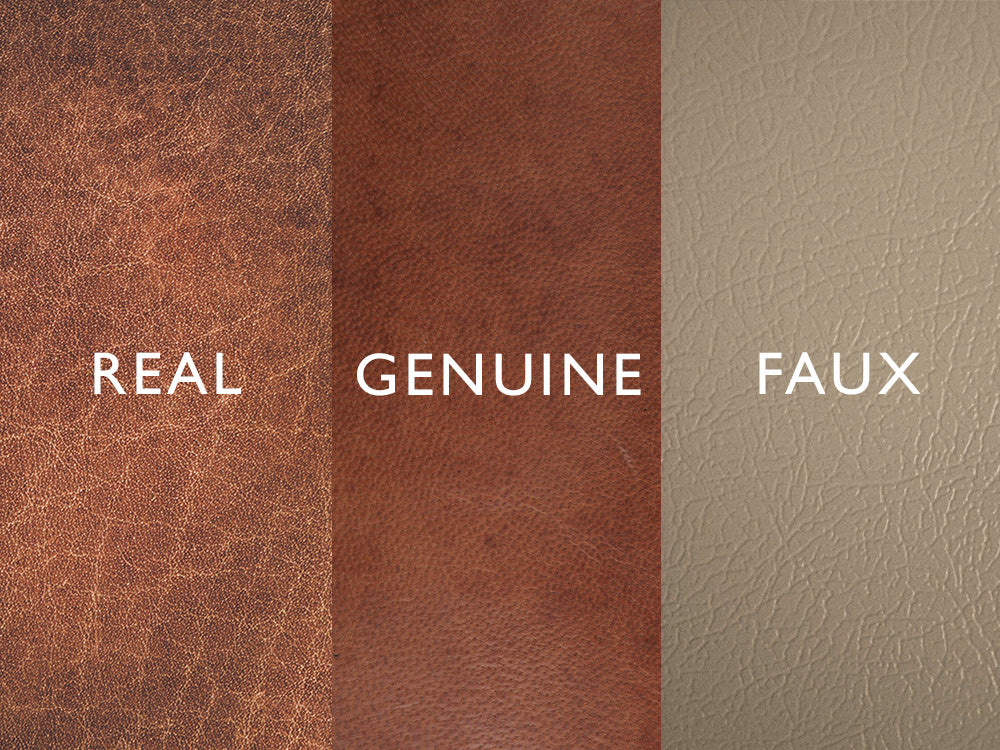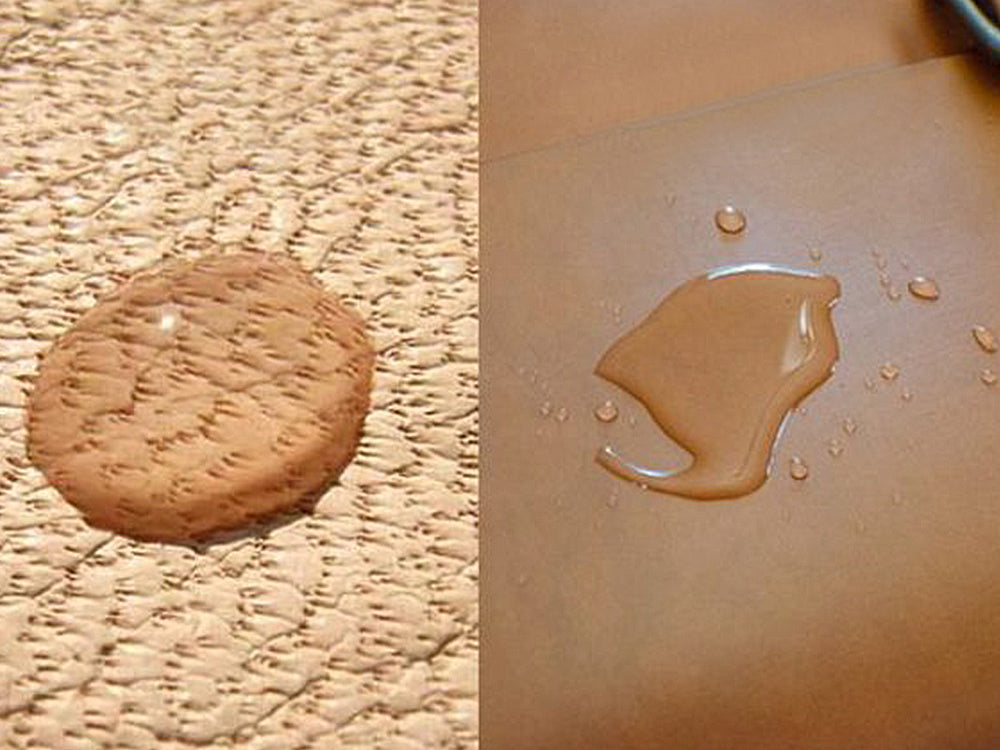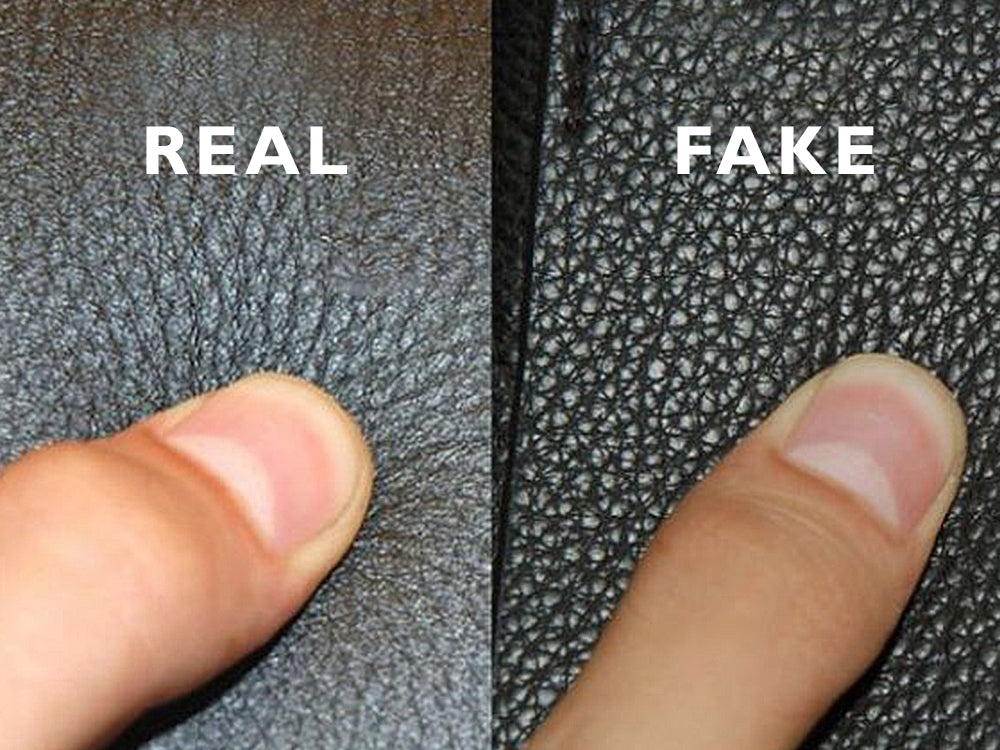As the synthetic leather industry is prospering year by year, it can be sometimes tricky to tell if the leather is real or fake. As we know products manufactured from high-quality real leather are luxurious and expensive, so no one wants to take fake leather goods home at the price of real leather. Our detailed guide on real leather vs fake leather will help you to identify real leather from fake leather in no time.
The main and most important difference between the two is that the real leather is made from animal hides such as buffalo, goat, cow which is natural whereas synthetic or faux leather is made from the plastic base, polyvinyl chloride (PVC), and polyurethane (PU) which is chemically treated and hence faux leather does not contain the actual animal skin. Besides these technical aspects, let’s find how can one spot fake leather in some easy steps.
Types of leather
Before moving to the tips and tricks to identify real leather, first, let’s see what are the most common types of leather.

Real Leather
Real leather can be full-grain leather or top-grain leather. They are both the highest quality leather made from real animal hide. This type of leather is thick and has a little rough surface with some imperfections showing on the surface.
Faux Leather
Faux or synthetic leather is also called PU leather and it is a man-made material from chemical processes using a plastic base. It is not made from real animal hide and hence is less costly as compared to real leather.
Genuine leather
If a leather item is tagged as a “Genuine leather product” or “made from genuine leather”, it means that technically it is made from real leather but genuine leather items are usually the lowest grade of leather items as this term does not specify the quality or grade of leather. Genuine leather generally less durable and does not look as nice as higher-quality leather.
How to spot fake leather?

As we all know that the real leather costs a lot higher than fake synthetic leather so no one would like to get cheated by getting cheap fake leather products while paying heavily for real leather goods. Here are a few tips and tricks to spot fake leather while you go to purchase your next leather jacket, leather bag, or shoes.
Test 1 – Check the label
Most of the time the real leather is proudly stated on the product label and the faux or synthetic leather is also mentioned on the label so it becomes easy to identify what you are buying. So always check the label of products before purchasing them to know more about the leather, the place of manufacturing, the care instructions.
Test 2 – Check the Price
The original full-grain leather is one of the highest quality of leather that money can buy and hence its price is a lot higher than faux or any synthetic leather so also check the price tag to get an idea of the leather type.
In real leather also there are different prices, full-grain leather is considered most expensive, the top grain leather is less expensive, while the split leather is even less expensive. But still, they all will be more expensive than synthetic faux leather.
Test 3 – Check Visible Characteristics
For identifying leather, look closely at the surface to understand the texture. Real Leather doesn’t have a perfectly smooth surface as each animal hide has its unique texture and imperfections which make it look natural and one of its kind. It might have scratches, wrinkles, and creases which indicates that the leather is real. Also real leather has a bit rough and a grainy surface. Due to its stretchable and flexible nature, it wrinkles when touched or pressed.
Whereas faux leather has a very smooth and uniform finish, the surface and pattern look very even and uniformly repeating. Faux leather will look unnatural and behaves more like plastic when it is touched or pressed and retains its structure.
Test 4 – Examine the pores
Finally, to tell the difference between faux and real leather, be sure to check the pores of the leather. Just as before, if it seems too perfect it is probably too good to be true. Real leather has an inconsistent pattern of pores with minor imperfections because it is natural. The pores are more prominently visible in full-grain leather. In contrast, fake leather has a consistent, evenly spread pores and repeating pattern.
Test 5 – Smell the Leather
Real leather has a distinct animal skin smell that cannot be added artificially. For some people, the smell of real leather is one of the best smells in the world. While some people do not like this smell, it depends on personal preference. Leather is simply processed animal skin so it is obvious to smell like skin. Hence, the leather smell is one of the features that can be used while comparing real leather vs fake leather.
We often hear this question a lot that “what does fake leather smells like?” It is usually odourless or it will smell like plastic and chemicals which can be a great sign to identify synthetic materials.
Test 6 – Touch the Leather

Whether you are purchasing a leather jacket, bag, or any other article, touch the leather with your bare fingers, if it is real then it will feel a little bit rough and uneven. When you press your fingers into the leather, it will stretch and wrinkle like our own skin.
If it is fake leather, it will feel cold to touch and unnaturally uniform surface. It will not wrinkle and stretch like skin when it is pressed.
Test 7 – Water Test
Real leather is a highly porous material so when water drops on the real leather surface, it usually soaks the water if it has not been waterproofed with any wax or sprays. Fake leather is not natural and is usually made from a plastic base so it does not absorb moisture, the water will simply stand on the leather.
Test 8 – Check the Edges
If you are buying any leather goods that have edges visible somehow, then take a look at the edges of the leather, fake leather has smooth, clean-cut edges with no strands coming out but real leather is made of many strands and has rough uneven edges.
Made to last
Real leather such as full grain or top grain leather is much more durable than faux leather. It does not peel or crack like fake leather. It goes through regular wear and tears over time which will only enhance the look of the leather and make it even more artistic. This quality of natural leather of growing more beautiful with time is called leather patina which is one of the most desirable aspects of real leather. Whereas, Faux leather is not breathable or stretchable and starts to flake off with overtime usage.
Environment Sustainability
Real leather is organic and biodegradable and hence it is more environmentally friendly. With the massive existence of the meat industry worldwide, animal hides are a major bi-product of dead animals and it is used in the leather industry which makes it more sustainable as compared to faux leather which involves the usage of harmful chemicals while manufacturing them, all these chemicals harm the environment. It also takes a lot longer to biodegrade leaving harmful footprints behind on nature.
Conclusion
Leather bags made from premium and high-grade real leather are luxurious, durable, classy, and worth every single penny spent. But the various terms used to describe leather can get you confused and hence, being an informed customer is very important.
If you are shopping for leather products, considering the above tips and tricks in mind can help you identify the real leather and will save you from getting cheated in the name of “Genuine leather”. For some amazing bags handcrafted from high-quality real leather, check our collection page.




 Mobile/What's App/Wechat
Mobile/What's App/Wechat E-Mail
E-Mail ADD
ADD




